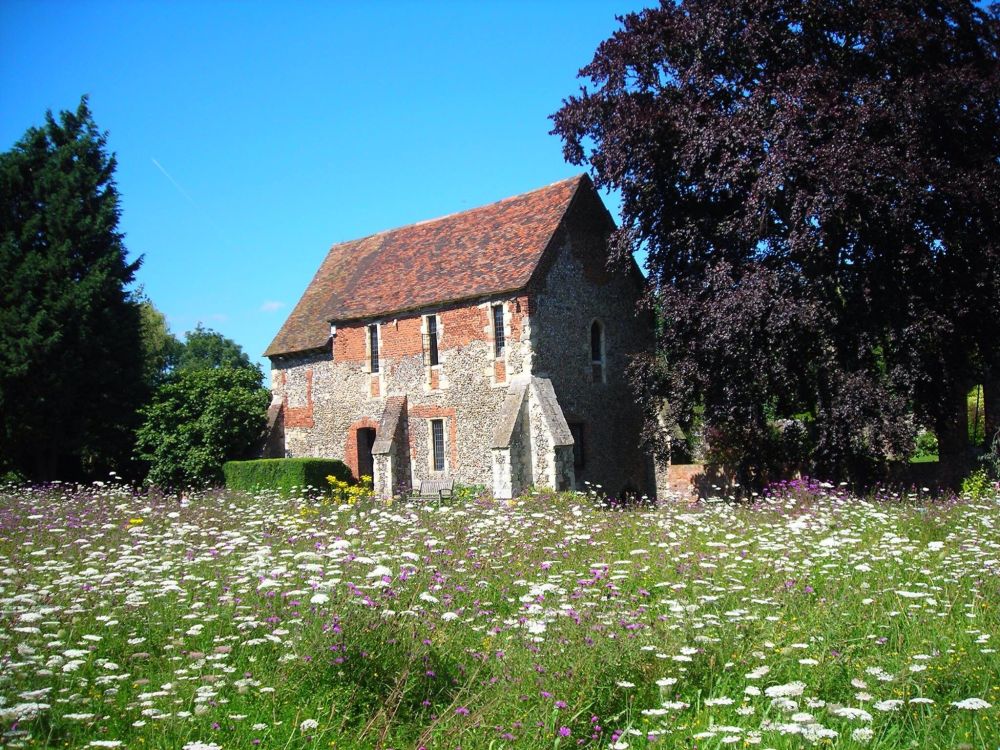

The charming city of Canterbury in the United Kingdom boasts a rich tapestry of historical landmarks, among which the Greyfriars Chapel and Franciscan Gardens hold a special place. Nestled at the heart of this medieval city, these serene grounds provide visitors with a peaceful retreat and an opportunity to explore English history firsthand.
Greyfriars Chapel is the remains of a Franciscan friary established in Canterbury around 1267. The Franciscans, also known as Grey Friars due to the color of their habits, played a crucial role in the local community during the medieval period. They were known for their commitment to poverty, education, and caring for the sick. The chapel itself has stood the test of time, miraculously surviving the Dissolution of the Monasteries under King Henry VIII in the 16th century, when many religious houses were surrendered or destroyed.
The enchanting Franciscan Gardens that surround the chapel are a later addition, cultivated to offer a tranquil environment for reflection and relaxation. Once part of the friary, the gardens have been maintained to keep the legacy of the Franciscan Order alive in Canterbury.
Canterbury has been a tourist destination for centuries, largely due to its religious heritage and the famous Canterbury Cathedral. The city's pilgrimage history was immortalized in Geoffrey Chaucer's "The Canterbury Tales." However, the Greyfriars Chapel and Franciscan Gardens have played a quieter role in Canterbury’s tourism narrative. They have provided a lesser-known haven for those looking to escape the bustling streets and delve into the contemplative history of the Franciscans in England.
Today, Greyfriars Chapel and Franciscan Gardens are open to the public and serve as a popular spot for visitors interested in history, architecture, and horticulture. The chapel is particularly noted for its beautiful medieval architecture, including the striking timber roof. It is often used for weddings and other ceremonies.
The gardens are meticulously cared for, featuring a variety of plant species and a peaceful ambience. They are a perfect setting for a leisurely stroll or a quiet moment away from the tourist crowds.
In recent years, there has been a trend towards "slow tourism" in destinations like Canterbury. Travelers are looking to engage more meaningfully with the places they visit, often seeking out tranquil sites such as Greyfriars Chapel and Franciscan Gardens. This trend emphasizes experiences over mere sightseeing, with visitors taking time to appreciate the historical significance and natural beauty of areas off the beaten path.
For those planning a visit to Greyfriars Chapel and Franciscan Gardens, it is worth noting that while there is no admission fee, donations are welcomed to help maintain the site. The chapel and gardens are typically open throughout the year, though it is advisable to check current opening times before visiting.
Address: Stour Street, Canterbury, Kent, CT1 2BD
Accessibility: The gardens are generally wheelchair accessible, but parts of the chapel may present difficulties due to its medieval construction.
The Greyfriars Chapel and Franciscan Gardens are a testament to Canterbury's deep historical roots and provide a serene escape for those visiting the city. They embody the spirit of the Franciscan Order and offer a reflective space where the past converses with present visitors seeking a quieter form of tourism in Canterbury.